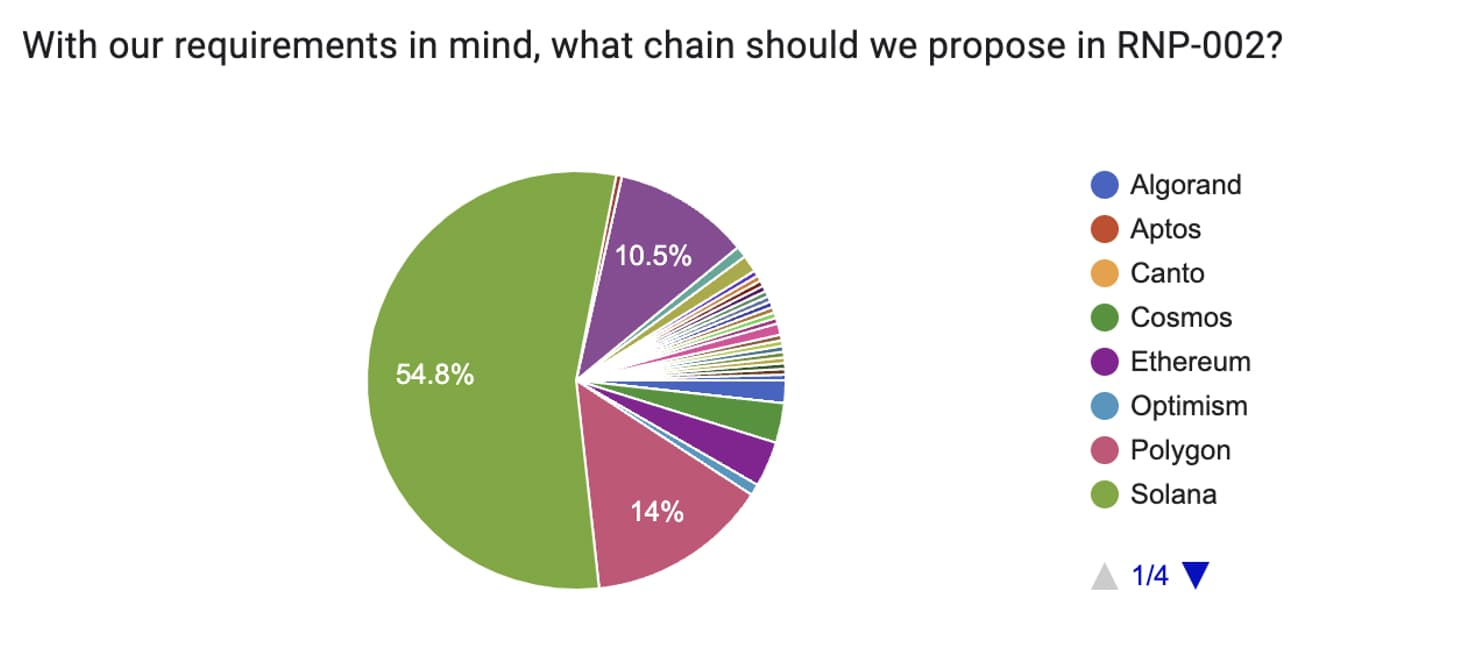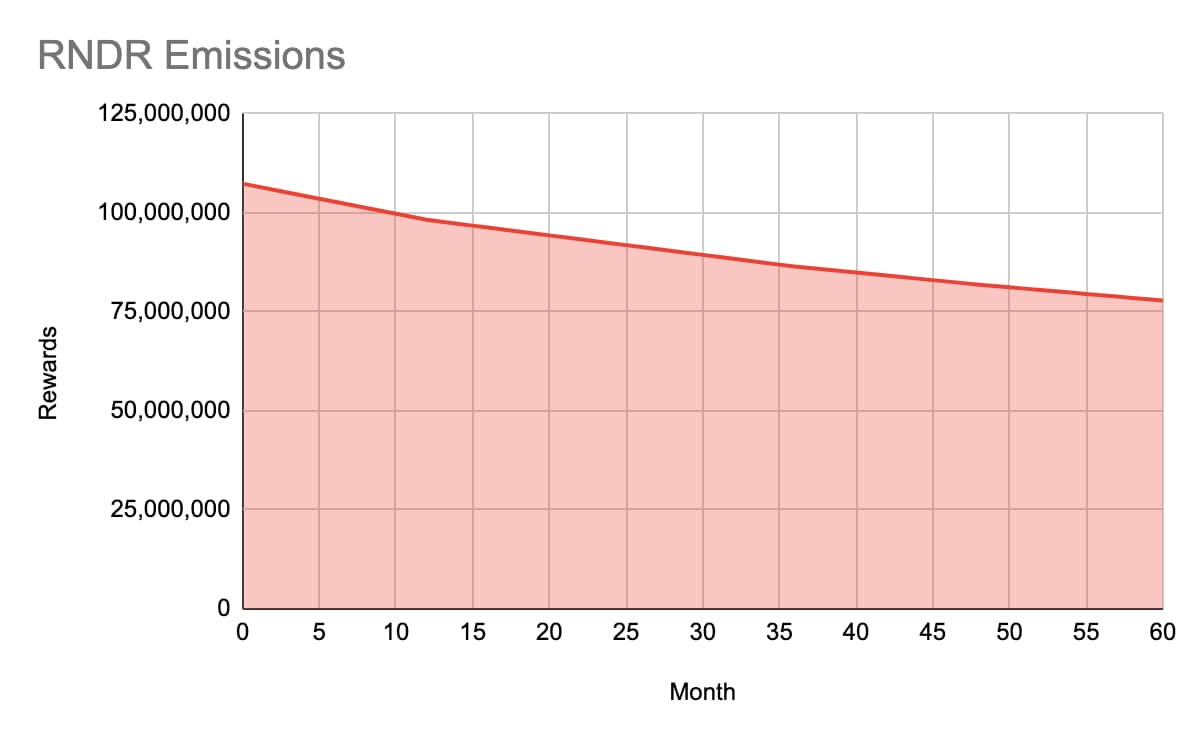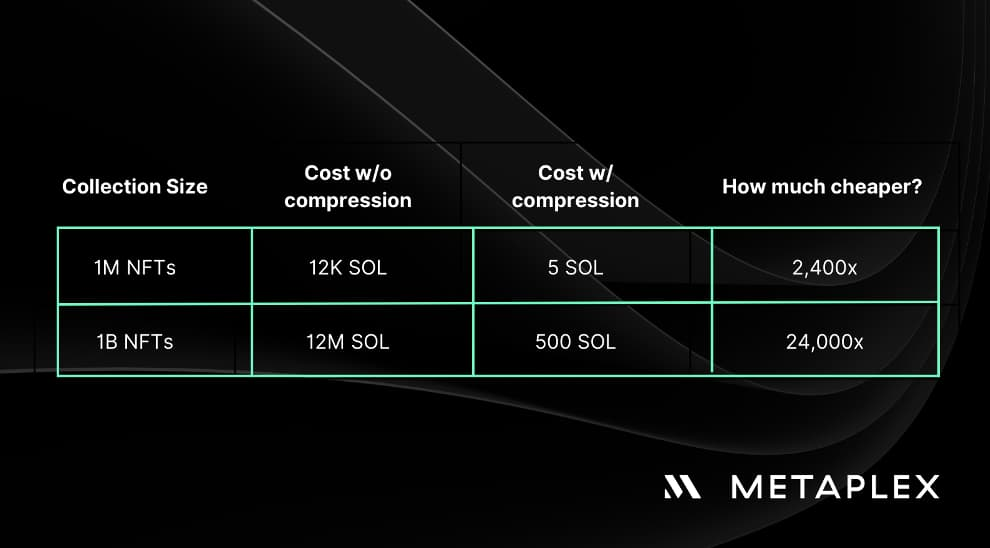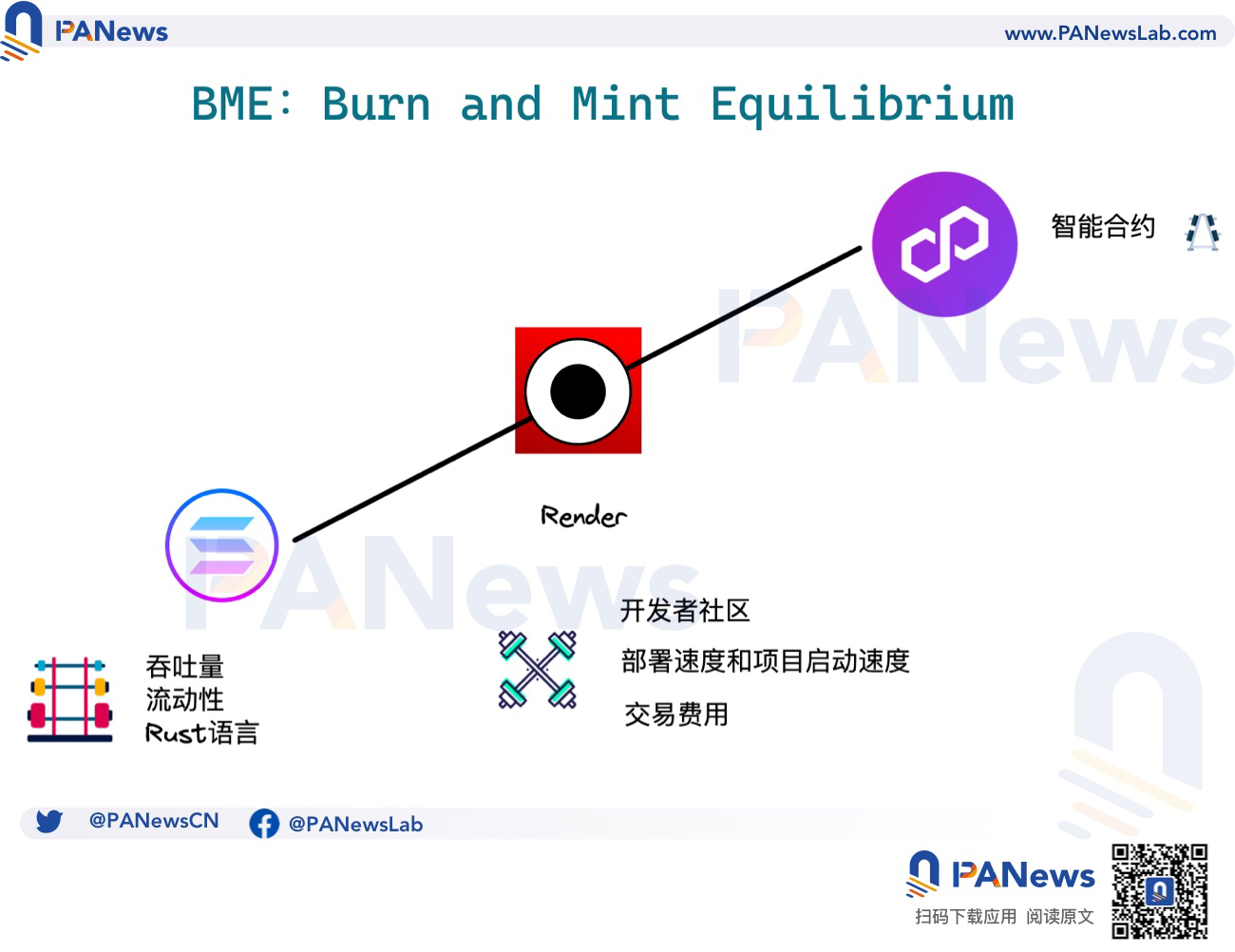On March 21, the distributed rendering project Render Network announced to build a BME model (Burn and Mint Equilibrium, casting and destruction model) on the Solana network in response to the community's proposal to switch from the Polygon network to Solana.
Under the BME model, RNDR tokens will gain more value support, and will actually be transferred to a deflationary mechanism. At the same time, it will also help to verify the proof of work submitted by node operators. On the Solana network, the efficiency and speed of rendering will be significantly improved, which will also help the smooth implementation of the BME model.
If the proposal is successfully implemented, Render Network will gradually leave Polygon and enter Solana, which can be described as a retrograde gesture under the current sweeping trend of the Ethereum ecosystem. However, Render is in the field of rendering, and the demand for high-speed network is the first. In the community sentiment survey, 55% of users agree to transfer to Solana, 31% of users support high-level L1 public chain networks such as Aptos and Algorand, and Only 14% of users choose Polygon.

Minting and burning models empower RNDR
Although the Ethereum mainnet can ensure security, the congestion time will directly increase the Gas Fee, and Polygon has too few verification nodes, resulting in a high degree of centralization. Solana has about 2,000 active verifiers, while Polygon has about 100 .
Real-time rendering on the chain requires the network to maintain a stable operating state at the enterprise level, and the current Solana cannot fully meet the needs of Render due to frequent downtime.
The BME mechanism is a mature mechanism that has been verified by projects such as Helium, and is more suitable for the current Render to ensure security while seamlessly switching the main network. Render Network can complete the operation in an asynchronous manner, and pay RNDR to the node operator, and the off-chain records can also be continued to future nodes normally.
In order to ensure the safety of the migration, the BME model can run without real-time dependencies, and allows batch processing to ensure node integrity in the event of downtime issues to minimize on-chain dependencies.
Specifically, the BME model is a matching and balancing mechanism between users (artists) and node operators. Users use RNDR as a means of payment to node operators. Users need to destroy the peer-to-peer RNDR in exchange for allocation to node operators. business credits.
The BME mechanism of the Render main network will have an upper limit on the release of tokens, and will maintain the current creator-node operator two-way market model. The BME model will include node operators, creators and liquidity providers (LP).
The RNDR tokens minted on the Render main network will be distributed to operators according to the workload completed by each node, and may be adjusted proportionally to certain reputation scores. At the same time, the overall number of tokens can be dynamically adjusted to meet the usage needs of different network situations .
Specifically, each work will be priced in US dollars, the creator will burn the equivalent RNDR tokens, and then a set of non-transferable and non-fungible proof-of-work points (Render Credits) will be issued to the creator and distributed to Node operators to record the work done on the network.
Different from the process of token burning and point issuance, the network will mint a certain amount of basic tokens in each period and distribute them to node operators. Node operators can be compensated for providing value on the network. This value can be Divided into the following two parts:
- Coupon Token Rewards: Rewards for completing specific tasks, such as rendering tasks
- Availability rewards: Incentives for node operators to maintain activity to meet rewards for availability when users call rendering services
And LP (liquidity provider) can get rewards for contributing pledged tokens to the liquidity pool, so that RNDR can be used for the new burning and minting balance system.

In this case, the asset attributes of RNDR can be further explored. At the same time, the introduction of combustion mechanism and point conversion will significantly reduce the circulation of RNDR. When the network utilization rate reaches a certain load condition, RNDR can become a de facto deflation mechanism. .

Advantages of high-speed Internet
Render Network's plan to break away from Polygon is not a whim. As early as in the RNP-001 proposal in June 2022, it has been planned to introduce the BME model to build a new extended network on the Solana network.
Returning to the requirements of the Render Network itself, distributed rendering requires a real-time network, high hardware requirements for rendering, and an interactive information transmission mechanism, and it is necessary to synchronize the node status on the chain to maintain a decentralized network.
Specifically, the Render community considered the following criteria:
- developer community
- throughput
- fluidity
- transaction fee
- Support for programming languages
- Deploy smart contracts
- Development velocity and project launch velocity
Render is already a mature project with an annual processing of millions of frames. It requires the alternative Layer 1 network to be able to withstand large-scale and high-load pressure, and to meet the liquidity on the chain and off the chain. The most intuitive data is TPS. The Ethereum mainnet is only about 14 TPS, the average of Polygon is twice that of the mainnet, about 29 TPS, and the average TPS of Solana is more than 140 times that of Polygon , about 4000TPS.
In addition, the on-chain state synchronization of the rendering network requires a huge amount of network traffic, and transaction costs must be considered first. According to calculations, the Solana network has higher transaction throughput and lower transaction fees than Polygon . According to the current demand calculation, running a single rendering of 200 frames on the network requires 200 transactions, including data on-chain and payment after completion, the Ethereum mainnet needs about $140, Polygon needs $5, and Solana only needs $0.001, about 5000 times less than Polygon .
The Render network also needs to consider future needs. Once it is used by a large number of people, it will have special requirements for a high-throughput, low-latency network. Considering the carrying capacity of the network on the chain, the answer is still ready. Only Solana can meet this high-speed demand.
The most typical is the demand for Gas Fee in the era of large-scale use of NFT technology, such as large-scale 3A online games and massive social data on the chain. These data need to be uploaded to the chain to meet dynamic and diverse forms of expression. Millions of rendering workloads, including individual components of any image, video, including 3D models, textures, scripts, HDRI, effects, custom render graph nodes, volumes, rays, sdf/meshes, and scene graph states, etc. wait. Additionally, the Merkle tree compression technology for NFTs developed by Solana Labs and Metaplex has exponentially increased the ability to tag assets for rendering scenes.

After comparing Solana and Polygon, Solana can better meet the needs of Render. For example, the Rust language used by Solana can provide better flexibility and higher operating speed than solidity, which is convenient for GPU rendering. Secondly, the Solana virtual machine can support C/C++ or Rust code to convert it into a smart contract. In a December 2022 survey, Rust was more than 5 times more popular than Solidity.

However, whether it is the bulkiness of the Ethereum mainnet or the high speed and low price of Polygon and Solana, they cannot perfectly meet the future needs of Render at present, and additional measures are needed to ensure the development progress of Render.
epilogue
With the development of blockchain technology, professional-level and enterprise-level services in the traditional Internet field are gradually migrated to the blockchain network, and the rendering service represented by Render Network also requires faster and more stable network services. On the one hand, , which represents great progress in the blockchain network, but it should also be noted that the current Solana, Polygon, and Ethereum mainnets cannot really meet all the needs of Render.
Development problems need to be solved during development. For example, the BME mechanism has been adopted in Helium and Render, which can offset the problems caused by the network itself to a certain extent. Once the higher-speed L2 network becomes popular, Render also hints that it will continue to migrate .





